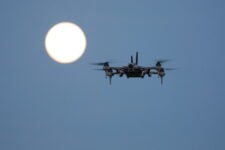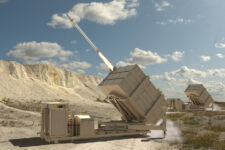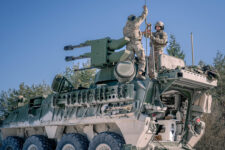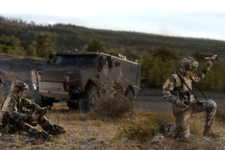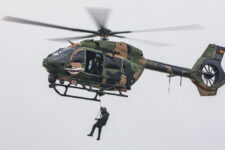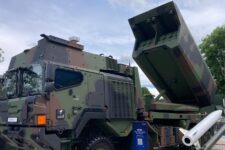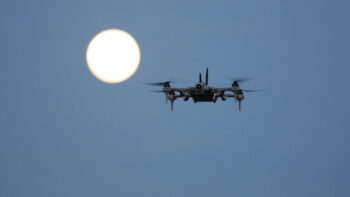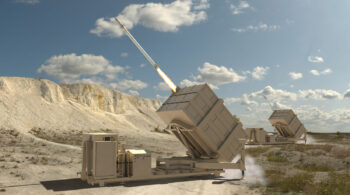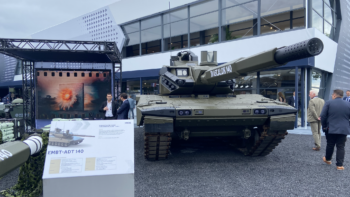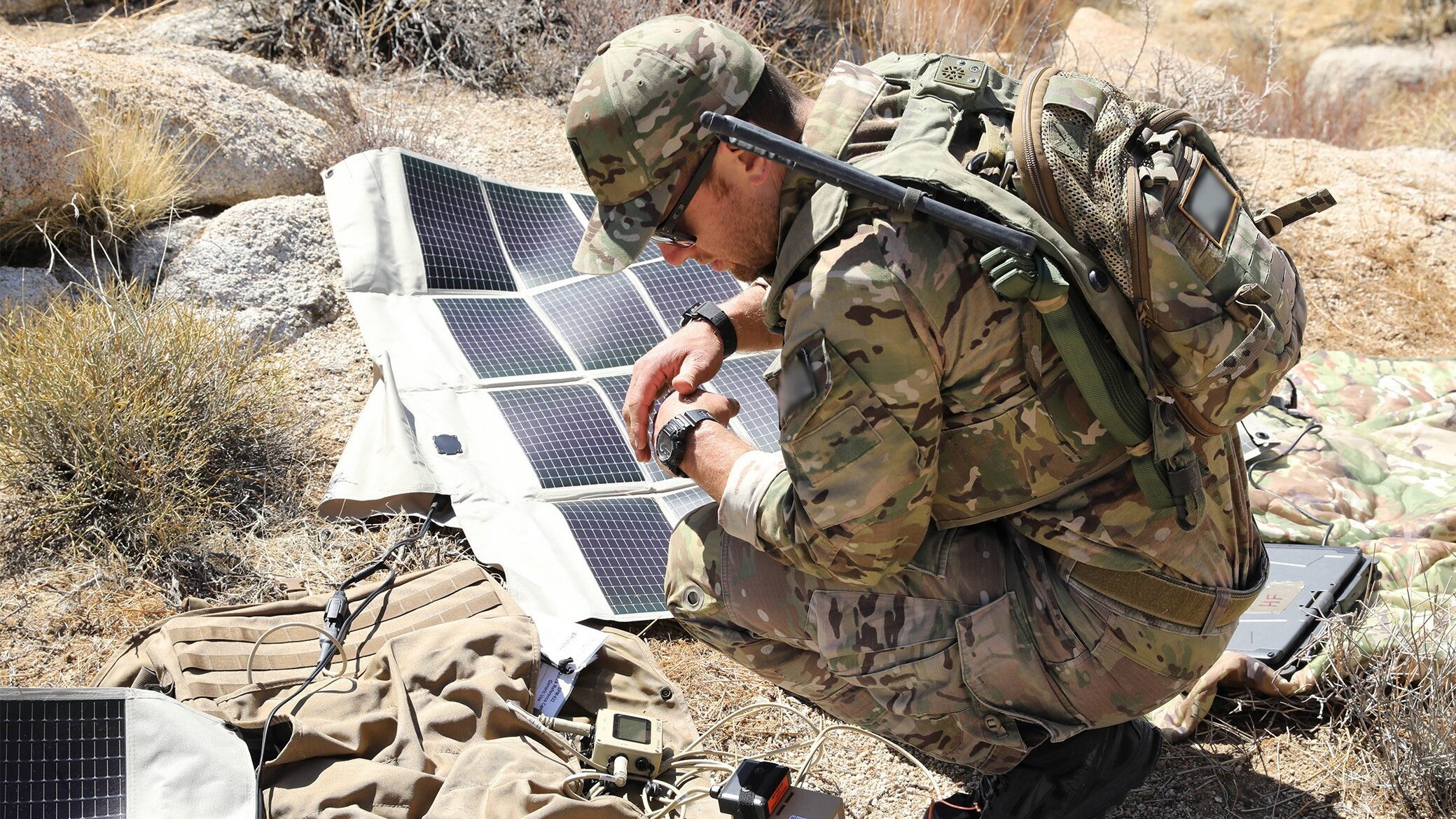
A U.S. Army Green Beret with 1st Special Forces Group (Airborne) sets up solar panels for operational communications at the National Training Center, Fort Irwin, California. (U.S. Army photo by Pfc. Lisa-Marie Miller)
UPDATED Nov. 28 at 5:01 pm ET to correct a cost figure.
AUSA 2022 — The US Army estimates that implementation of its climate strategy will cost more than $6.8 billion over the next five years, according to its implementation plan released today, an investment the service believes will increase the resilience of its installations and equipment in the face of climate change.
The implementation plan, which details steps to achieve the goals laid out in the service’s previously released Climate Strategy, lists several objectives and tasks to make the Army more energy efficient between fiscal 2023 and 2027. It follows the Army climate strategy’s three lines of effort: installations, acquisition and logistics, and training. The assistant secretary of the army for installations, energy and environment is responsible for overseeing the implementation.
“As extreme weather becomes commonplace, the Army must adapt its installations, acquisition programs, and training so that the Army can operate in this changing environment and reduce our greenhouse gas emissions,” Secretary of the Army Christine Wormuth said in an Army release. “This climate implementation plan will improve our resiliency and readiness in the face of these changes.”
The 50-page document says the plan “will begin to create a climate- and sustainability-informed workforce and integrate climate change adaptation and mitigation appropriately into operations and programs.” The total dollar figures, found in an annex to the published plan, include direct programmed cost as well as “other costs” for programmed actions “affecting” each objective.
About $5.2 billion of the estimated $6.8 billion will go to the installation line of effort, where the service wants to reduce its greenhouse gas emissions and field fully electric non-tactical vehicles. Under the implementation plan, the Army plans to complete and operationalize 55 microgrids on Army installations. The service wants 20 of them by FY24, with an additional 15 operational by FY26 and 20 more entering service in FY27. The total estimated cost for the microgrid objective is $1.6 billion, according to the plan.
The plan also states that the service will reduce greenhouse gas emissions from Army property by 10 percent over a 2008 baseline by the end of FY23. By FY27, it was wants to reduce emissions by 40 percent of the baseline.
That goal feeds into the Army’s electrification push. By FY27, the service aims to fully electrify its light duty, non-tactical vehicle fleet — vehicles mostly driven at or between installations. It plans to enable that by establishing orders in FY23 to direct the purchase, lease and use of the “most efficient and effective fleet with the lowest carbon footprint possible,” the plan states. The service also aims to electrify 40 percent of its non-tactical fleet by FY27, including its medium- and heavy-duty non-tactical fleet. In FY23, it plans to introduce an Army-wide policy “favoring zero-emission, plugin hybrid, and hybrid platforms for medium and heavy-duty [non-tactical vehicle] leases and purchases.”
The Army estimates that initiatives under its acquisition and logistics portfolio will cost around $1.6 billion, including an effort to make tactical vehicles more efficient. Under that plan, the service wants to field its tactical vehicle electrification kit, which turns off the engine during extended periods of idling, to small portions of its tactical vehicle fleet. By FY27, the Army wants the kit in 12 percent of its Joint Light Tactical Vehicle fleet, 7 percent of its medium tactical vehicle fleet, and 5 percent of its heavy fleet.
The Army also wants to develop hybrid-drive components for tactical vehicles, create high energy density vehicle energy storage capabilities, and test hybrid-drive in select tactical wheeled vehicles by FY27. By FY26, it wants to prototype the Battlefield Rapid Recharge Capability, a standalone vehicle charger. The service also plans to develop policies aimed at making its logistics more energy efficient by fiscal 2023.
The third line of effort, training, will cost $1 million the budget estimates — a relatively low figure because associated climate-related training activities “existed prior to the ACS (Army Climate Strategy) and are broader than the ACS,” the plan states. This effort wants to “train and educate the Army to operate in a climate-altered world.” To do so, the plan states that the service will publish climate change-related lessons learned and best practices in fiscal 2024 and 2026. By the end of FY27, the service wants to update civilian and leader training to incorporate “climate literacy.”
“For the foreseeable future, climate impacts will disrupt Army activities and increase the frequency of crisis deployments,” the implementation plan states. “Future competitive advantage requires enhanced operational capabilities reflecting changing environmental conditions. The Army must strengthen those capabilities through a combination of installation management, training, acquisition and logistics initiatives.”


